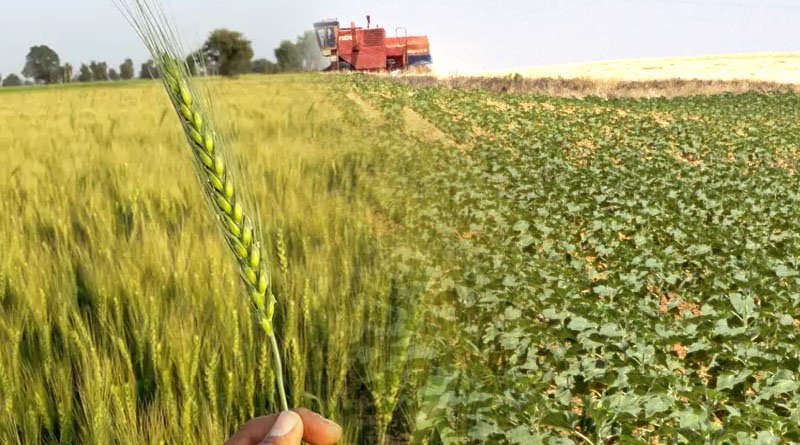Finance division is optimistic that rabi season will bring positive returns for the nation’s agricultural sector because of favourable circumstances made possible by Kissan Package

The finance division is optimistic that the rabi season will bring positive returns for the nation’s agricultural sector because of the favourable circumstances made possible by the prime minister’s Kissan Package, which was announced in the wake of last year’s devastating floods. Crop production is anticipated to rise during the rabi season due to the improved input situation.
The wheat crop has been sown on an area of 20.77 million acres for the Rabi season 2022–23, according to the Q-monthly block’s report for the end of the previous year. The Kissan Package 2022 incentives, which will increase production in rabi season, are expected to keep the input situation favourable, according to the report.
The irrigation water supply was 6.32 MAF for November 2022, up from 5.50 MAF for the same month the previous year, according to IRSA. When compared to the same period in FY2022, the agriculture credit disbursement increased by 35.9% to Rs 663.9 billion (from Rs 488.5 billion).
Urea and DAP off-take were 583 thousand tonnes (1.6 percent more than November 2021) and 236 thousand tonnes, respectively, during Rabi 2022–23 (November 2022). (7.5 percent higher than November 2021).
Floods brought on by climate change had seriously damaged the nation’s agriculture and jeopardised its food security in the previous year. Pakistan is already a net importer of food, and its struggles with self-sufficiency are getting more and more difficult.
The floods in Pakistan were the biggest news of the year, not just in agriculture but also in the rest of the nation and possibly the entire world. In other words, Sindh and Balochistan have experienced a massive increase in monsoon rainfall this year as a result of climate change.
According to the Met Department, the two provinces experienced the highest rainfall in recent memory, with 522 and 469 percent more rain this year than usual.
Even the economic effects alone have been disastrous. The most recent Post-Disaster Needs Assessment (PDNA) report estimates that Pakistan will require at least $16.3 billion for post-flood rehabilitation and reconstruction.
The government representatives’ release of the PDNA report and the international development institutions calculated the cost of the floods at $30.1 billion—$14.9 billion in damages and $15.2 billion in losses.
Just a few months ago, in the wake of the floods, the prime minister made the Kissan Package announcement. Small farmers nationwide will receive loans totaling Rs10.6 billion under this subsidy programme, while those in flood-affected areas will receive loans totaling Rs80 billion.
Along with interest-free and subsidised loans, subsidies will also be offered on agricultural imports like seeds, electricity, tractors, and even fertilizer. If properly implemented, the package will significantly aid farmers affected by this year’s floods in getting back on their feet.
By the end of December 2022, the government declared that it had been successful in providing agricultural loans worth Rs 663.9 billion to flood-stricken farmers in need of immediate recovery. By the end of December, it is anticipated that the total amount of loans disbursed will reach Rs 800 billion.
At a press conference on Wednesday, the minister of food security and research, stated that the agriculture loan was a part of the Prime Minister Kissan Package, which included a sum of Rs 1,819 billion, and was intended to revive Pakistan’s agriculture sector, particularly in the areas whose agriculture had been severely damaged by monsoon floods.
It is important to note that this is the maximum extent to which it should and can be taken. Any package of subsidies will not reduce the severity of the issue our agricultural sector is currently facing. Any subsidy will, at most, give temporary relief.
For far too long, the government has stood by while the nation’s agriculture suffers and has only provided band-aid fixes like subsidy packages. Because we have been covering up the problems for so long, our entire agrarian economy has become reliant on government assistance programs.